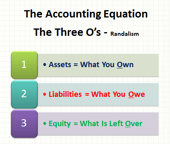Turning the 3 Pillars—Marketing, Accounting, and Production—Into Repeatable Routines(without adding more work)
You've done the hard part—you're running a construction business, getting jobs, and turning out quality work. Perhaps you've even begun to refine your marketing, job costing, and project delivery strategies, thanks to the three pillars we've discussed: Attracting the Right Jobs, Controlling the Money, and Delivering Projects Profitably.
But here's the next step that will take your business from reactive to reliable, from "just getting by" to scaling sustainably:
You need systems.
Not paperwork piles. Not more apps. Just smart, repeatable steps that make your business more efficient—even if you're still a one-person show.

As construction bookkeeping specialists, we help contractors every day who are great at swinging hammers but are overwhelmed by admin. This post will show you how to build simple systems around your existing workflow, so you can run your business more smoothly, make better decisions, and free up your time.
What Is a "System" Anyway?
A system is simply a repeatable process that occurs consistently without requiring you to reinvent the wheel each time.
It could be:
- A checklist
- An automation
- A template
- A recurring habit
- Or a combination of all of the above
The goal is predictability—so your business can function smoothly whether you're at a job site or taking a day off (yes, that's allowed!).
Why Small Construction Businesses Need Systems
You might be thinking, "I'm not a big company—I don't need systems."
But the truth is, you need them even more. Why?
Because without systems:
- Every invoice is different
- Every client interaction takes extra effort
- You forgot to track your hours or materials
- You lose receipts or miss billing for change orders
- You're constantly reacting instead of planning
The right systems save you time, reduce stress, and increase your profitability. And they don't have to be complicated.
System #1: A Simple Lead-to-Job Process
The Problem: You get an inquiry, scribble notes on paper, forget to follow up, or lose track of what was discussed. Sound familiar?
The System:
- Create a basic lead intake form (Google Form, CRM tool, or paper checklist)
- Pre-qualify leads with a few standard questions:
- Project type, location, timeline, budget
- Save all client information in one place (e.g., Google Sheet, Notion, Trello).
Use a standard estimate template so every quote includes:
- Scope
- Pricing
- Timeline
- Payment terms
Send a welcome email template after a job is accepted (include next steps, policies, and what to expect)
Bookkeeper's Tip: Keeping track of leads and estimates helps you compare projected vs. actual profits, so you can learn which jobs are truly worth your time.
System #2: A Weekly Money Routine
The Problem: You're too busy to check the books, so you don't know if you're making or losing money until tax time.
The System:
Set aside 30–60 minutes each week to review your finances:
- Reconcile transactions (or send to your bookkeeper)
- Check outstanding invoices
- Follow up on late payments
- Log hours worked and materials used (by job)
- Review your cash flow forecast for the next two weeks
Even if you outsource the bookkeeping, your weekly check-in keeps you in control. Make it part of your Friday routine, just like packing up your tools.
Bookkeeper's Tip: We can set up automated reports to send you a cash flow summary, job costing update, or overdue invoice list via email each week—no extra work on your end.
System #3: Job Costing and Change Order Tracking
The Problem: You think you're making money on jobs, but in the end, you can't say for sure, and you might've given away work for free.
The System:
Use a spreadsheet or job costing software (like QuickBooks Projects or Buildertrend)
Track:
- Labor (hours × rate)
- Materials (receipts, delivery invoices)
- Subcontractors
- Permits, rentals, and other direct costs
Add a simple change order log to each job file
- Description, date, price, status (pending/approved)
- Get approval before starting extra work
Bookkeeper's Tip: When you track jobs this way, we can help you compare estimated vs. actual costs and margins—so your future quotes get sharper and more profitable.
System #4: Project Timeline & Client Communication
The Problem: Clients get anxious when they don't hear from you, and scope creep happens when there's no clear plan.
The System:
Break each project into 3–5 major phases (demo, framing, finish work, etc.)
- Assign rough start/end dates
- Use a whiteboard, app, or calendar to stay on track
- Send weekly updates to clients (template email or quick text summary)
"Here's what we completed this week… Here's what's next…"
Bookkeeper's Tip: When jobs stay on schedule, you're more likely to invoice on time and get paid faster, which improves your cash flow.
System #5: Receipts, Invoices, and Tax Readiness
The Problem: You have a shoebox full of receipts and scramble to find documents when tax season rolls around.
The System:
- Use a digital system like Dext, Hubdoc, or even a shared Dropbox folder
- Snap photos of receipts as you go—tag them with the project name
- Save estimates, signed contracts, and change orders in organized folders
- Send invoices promptly at milestones (use progress billing templates)
- Review reports monthly with your bookkeeper (Profit & Loss, Job Profitability, etc.)
Bookkeeper's Tip: With clean books and digital records, tax time is painless—and you'll never miss a deduction.
The Myth of "More Work"
The biggest myth about systems is that they add more to your plate. In reality, they save you time and stress by preventing confusion, wasted effort, and missed revenue.
- Stop rewriting the same emails
- Stop digging for info buried in texts
- Stop guessing at prices or costs
- Stop forgetting to bill for work you did
With systems in place, your business becomes predictable, profitable, and easier to manage—even as you grow.
Ready to Systemize Your Construction Business?
You don't have to figure this all out on your own. As construction bookkeeping specialists, we help small contractors establish and maintain systems that align with their workflow.
Whether it's:
- Automating job costing
- Simplifying invoicing
- Organizing digital receipts
- Reviewing job margins
- Or building custom templates
We'll help you take the guesswork out of your money—and give you back control of your time.
Let's identify one or two areas in your business where a system could save you hours (and dollars) every week.
You build homes. We'll help you build the business behind them.
About The Author:
 Norhalma Verzosa is a Certified Construction Marketing Professional and serves as the Web Administrator of Fast Easy Accounting, located in Lynnwood, WA. She holds a Bachelor's Degree in Psychology and is a Certified Internet Web Professional, with certifications in Site Development Associate, Google AdWords Search Advertising, and HubSpot Academy. She manages the entire web presence of Fast Easy Accounting using a variety of SaaS tools, including HubSpot, Teachable, Shopify, and WordPress.
Norhalma Verzosa is a Certified Construction Marketing Professional and serves as the Web Administrator of Fast Easy Accounting, located in Lynnwood, WA. She holds a Bachelor's Degree in Psychology and is a Certified Internet Web Professional, with certifications in Site Development Associate, Google AdWords Search Advertising, and HubSpot Academy. She manages the entire web presence of Fast Easy Accounting using a variety of SaaS tools, including HubSpot, Teachable, Shopify, and WordPress.
OUTSOURCED ACCOUNTING FOR
THE BUSY CONTRACTOR
IN A MOBILE ENVIRONMENT
 |
 |
 |
 |
Download the Contractors APP today from the App Store or Android Store
Access Code: FEAHEROS
Click here to download the App on Android:
Click here to download the App on iOS:
Simply scan the QR code or search for ‘MyAccountants’ in the App Store and enter the Access code: FEAHEROS to utilize the powerful App features and capabilities and benefit from having our Construction Accounting App at your fingertips, 24/7."
PS: Even if you are not a Construction Contractor, you will find plenty of benefits in the app, so we invite you to download it, too! It's Free, so why not?




























